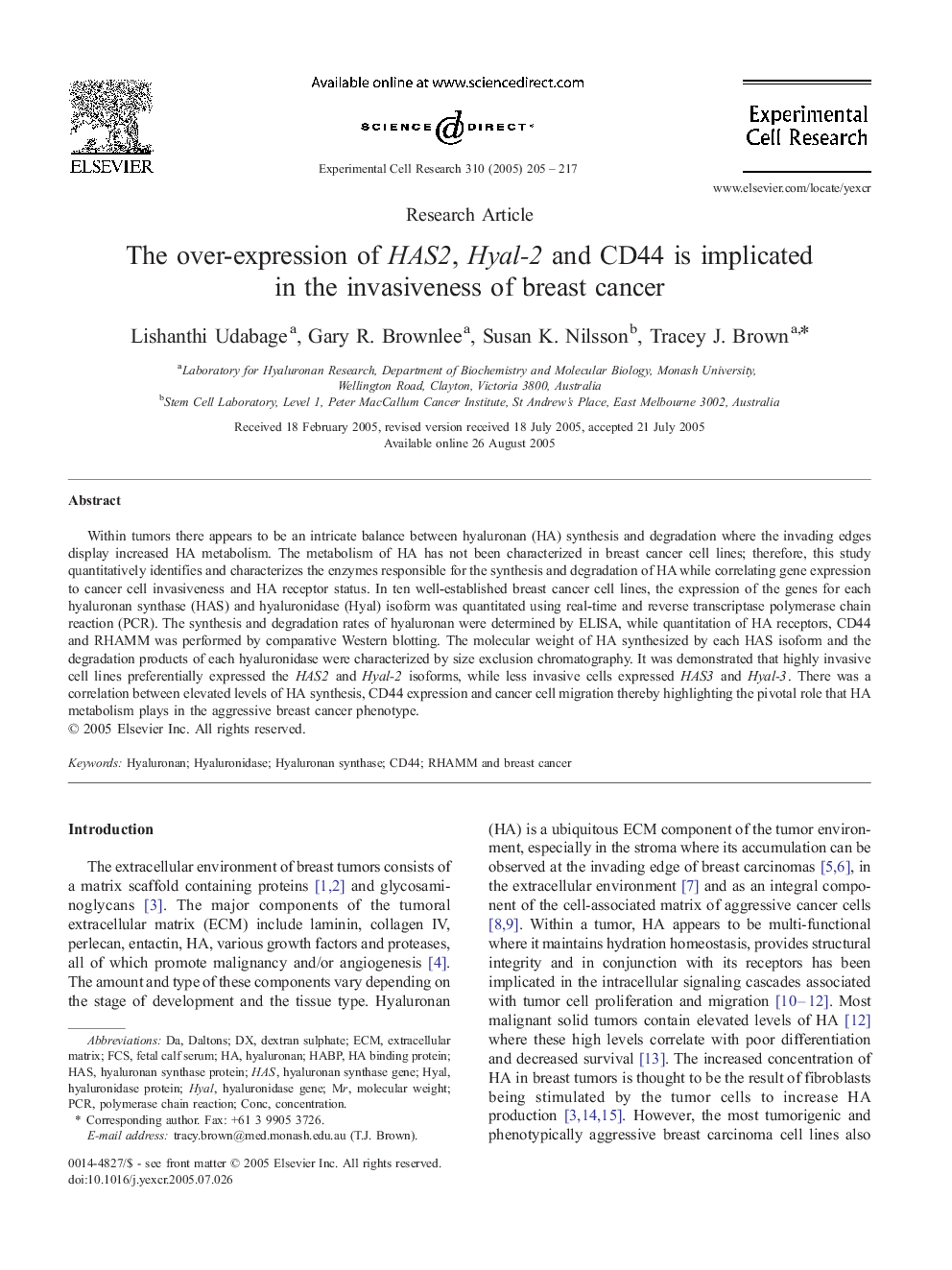| Article ID | Journal | Published Year | Pages | File Type |
|---|---|---|---|---|
| 10905425 | Experimental Cell Research | 2005 | 13 Pages |
Abstract
Within tumors there appears to be an intricate balance between hyaluronan (HA) synthesis and degradation where the invading edges display increased HA metabolism. The metabolism of HA has not been characterized in breast cancer cell lines; therefore, this study quantitatively identifies and characterizes the enzymes responsible for the synthesis and degradation of HA while correlating gene expression to cancer cell invasiveness and HA receptor status. In ten well-established breast cancer cell lines, the expression of the genes for each hyaluronan synthase (HAS) and hyaluronidase (Hyal) isoform was quantitated using real-time and reverse transcriptase polymerase chain reaction (PCR). The synthesis and degradation rates of hyaluronan were determined by ELISA, while quantitation of HA receptors, CD44 and RHAMM was performed by comparative Western blotting. The molecular weight of HA synthesized by each HAS isoform and the degradation products of each hyaluronidase were characterized by size exclusion chromatography. It was demonstrated that highly invasive cell lines preferentially expressed the HAS2 and Hyal-2 isoforms, while less invasive cells expressed HAS3 and Hyal-3. There was a correlation between elevated levels of HA synthesis, CD44 expression and cancer cell migration thereby highlighting the pivotal role that HA metabolism plays in the aggressive breast cancer phenotype.
Keywords
Related Topics
Life Sciences
Biochemistry, Genetics and Molecular Biology
Cancer Research
Authors
Lishanthi Udabage, Gary R. Brownlee, Susan K. Nilsson, Tracey J. Brown,
